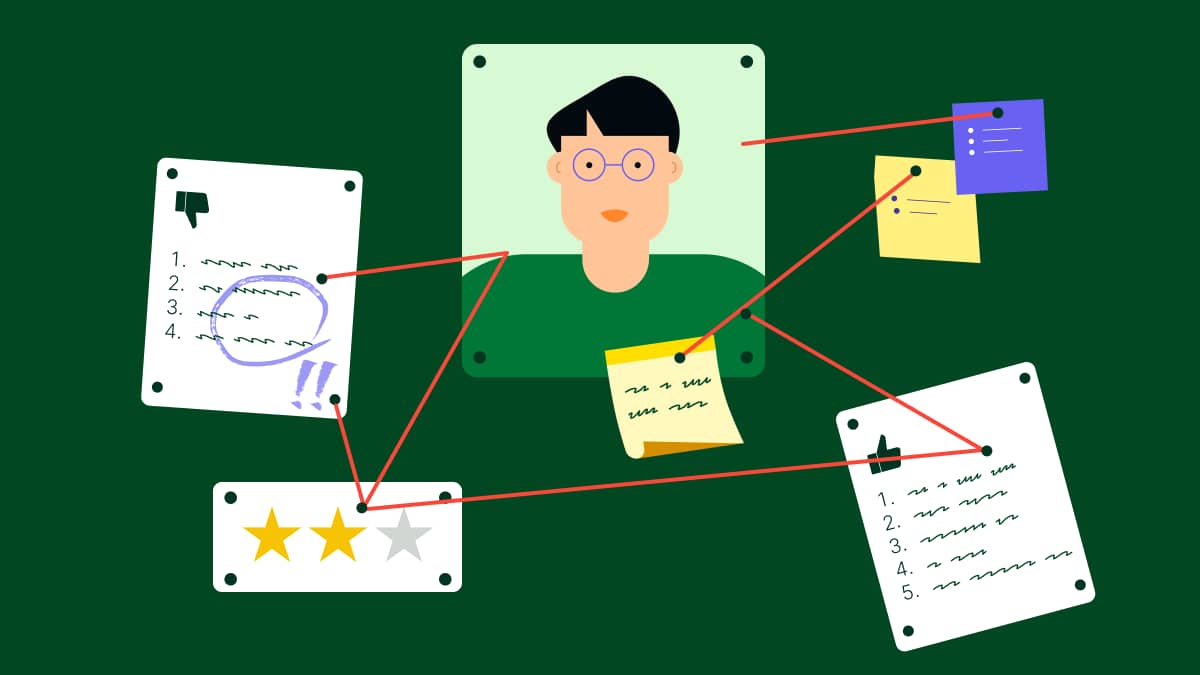Studying customer behavior shows companies why people buy. These valuable insights align sales and marketing efforts to connect with people and encourage purchases.
In this article, you’ll learn what customer behavior is and the different factors that influence it. You’ll also get a four-step, repeatable formula for customer behavior analysis so you can make data-driven changes that increase sales.
Key takeaways from customer behavior
Understanding consumer behavior reveals why people make purchasing decisions, allowing you to align sales and marketing efforts.
Track psychological, personal, social and situational factors to create personalized experiences for different customer segments.
Use customer feedback and data analysis to find purchasing patterns and optimize your strategy.
Pipedrive helps you collect customer data, analyze buying behaviors and automate follow-ups based on where prospects are in their journey – try it free for 14 days.
What is consumer behavior?
We define customer behavior as the study of how and why people buy, including the actions, emotions and mental processes behind purchasing decisions.
Companies study these factors to learn how to encourage more customers to buy. They use those insights to inform targeted marketing strategies, product offerings and sales and marketing decisions.
Note: You can use the terms consumer behavior and customer behavior interchangeably.
By segmenting customer behaviors, brands can understand different customer groups’ motivations, preferences and needs. There are many ways to segment behaviors, but some of the most popular factors brands focus on are:
Psychological behaviors (e.g., personalities more likely to fear missing out or those who are more skeptical)
Social behaviors (e.g., the willingness to act on influencers’ or family and friends’ opinions)
Personal behaviors (e.g., the customer’s tendency to impulse buy)
Situational behaviors (e.g., the customer’s mood at the time)
Say a B2B software company studies customer behavior to understand how IT directors make purchasing decisions.
Research reveals these buyers prioritize security and ease of implementation. They take four months to decide, but want fast onboarding once they commit.
Armed with this insight, sales teams can lead with security certifications and quick-start customer success stories. They can also space out follow-ups to match the four-month decision-making process instead of pushing for faster closes.
By understanding buyers’ behaviors and motivations, brands can better position products and services to meet their target audience’s needs.
Why is it important to track customer behavior?
Staying updated on external factors that impact your target market’s buying habits helps you adjust pricing, development and marketing efforts accordingly.
For example, the COVID-19 pandemic shifted global consumer behavior.
Some customers spent less to save money. Others did more online shopping to combat boredom.
However, customers’ reasons for buying or not buying change constantly. Revisit your target audience research regularly to avoid gaps between what you think customers want and what they actually need.
Here’s how tracking customer behavior patterns benefits your overall strategy:
| Benefit | How tracking customer behavior helps |
| Competitive pricing | Analyzing how customers feel about price points and discounts shows you how they value your product so you can set prices that drive purchases. |
| Data-driven product development | Identifying which features resonate with customers helps guide the development of products that fulfill their needs and desires. |
| More effective sales strategies | Understanding the internal and external triggers that lead to purchases (e.g., social proof) helps you craft approaches that leverage them and boost sales. |
| Targeted marketing messages | Observing how potential customers respond to tone and content helps you create more effective strategies that tap into psychological motivators and emotional responses. |
| Personalized segmentation | Customer behavior segmentation helps you create more accurate buyer personas and ideal customer profiles (ICPs), leading to more personalized experiences and effective targeting. |
Neuroscientist Dr. Terry Wu explains:
However, design choices and psychology alone don’t impact consumer buying behavior. In the next section, we’ll explore four more common influences.
4 common types of consumer behavior that impact how people buy
Customer behavior changes constantly, and understanding what factors affect buying decisions helps inform marketing and sales strategies.
Here are four standard models of purchasing behavior and when they apply.
1. Habitual buying behavior
Customers who purchase products repeatedly (e.g., sportswear or subscriptions) develop strong brand loyalty. Repeat purchases like these can become hard-to-break habits.
Many brands aim to make their products a habit. That often means breaking a habit with a competitor brand or activity.
For example, meeting scheduler Calendly offers new customers a two-week trial of its full product before they sign up for a paid subscription.
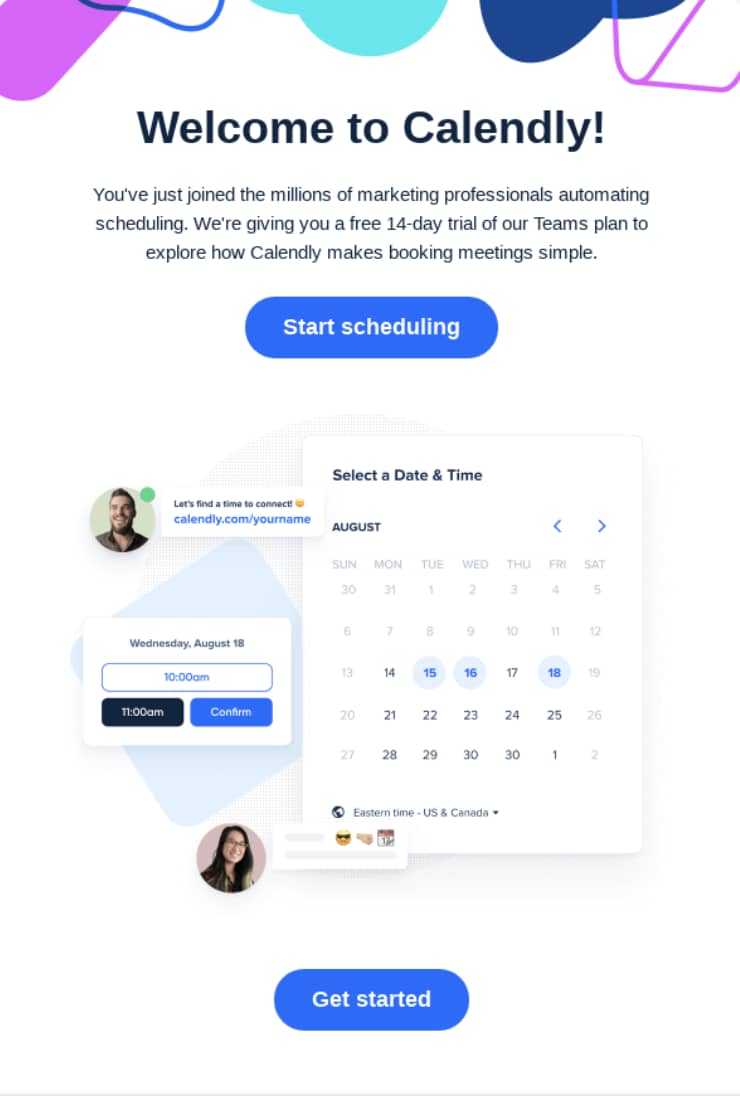
Calendly’s offer lets teams try its automatic calendaring tool over time, tapping into users’ habit-forming tendencies by making it a regular part of their meeting planning.
If Calendly can insert its product into customers’ daily scheduling tasks, it’s likely to gain loyal followers who will continue their subscriptions.
2. Variety-seeking buying behavior
For low-involvement products like skincare or toiletries, people like experimenting with different types to see which they prefer.
Customers may seek variety because they’re bored with their current choices, curious to try something new or want to eliminate alternatives.
Beauty brands like Sephora tap into this buying behavior by offering a wide variety of the same product (e.g., several lip gloss brands), personalized recommendations for existing customers and new products to keep customer engagement high.

Creating new products constantly isn’t as easy for B2B brands. Adding customization options and bundling existing services in new combinations can tap into this buying behavior.
3. Complex buying behavior
The buying journey for expensive, infrequent purchases (e.g., a new smartphone) can be lengthy and complicated – especially in B2B sales.
Hockeystack found that an average B2B company needs 54 touchpoints to generate a qualified lead after the first website visit.
Consumers spend time researching, reading reviews and digesting content to understand what they’ll get from each option.
In these cases, companies need to convey the value of their products over the competition. You can achieve this with creative content like video tutorials.
B2B companies can put together libraries of case studies like this one from Pipedrive.

In-depth content like case studies helps potential customers learn about complex situations and how your company can solve their problems.
Note: You can set up a sales pipeline using a customer relationship management (CRM) tool like Pipedrive to match your sales process to complex buying behaviors. The high-level overview lets you see where customers are in your sales process, with follow-up reminders and workflow automation to streamline activities.
4. Dissonance-reducing buying behavior
Customers often need help differentiating between similar products when weighing multiple choices (the “dissonance” is the worry they’ll make the wrong decision and regret it post-purchase).
To counter this concern, offer a free returns policy and highlight differences from your competitors with comparison pages.
For example, landing page tool Unbounce has a page that clearly compares its features to all its major alternatives at a glance.
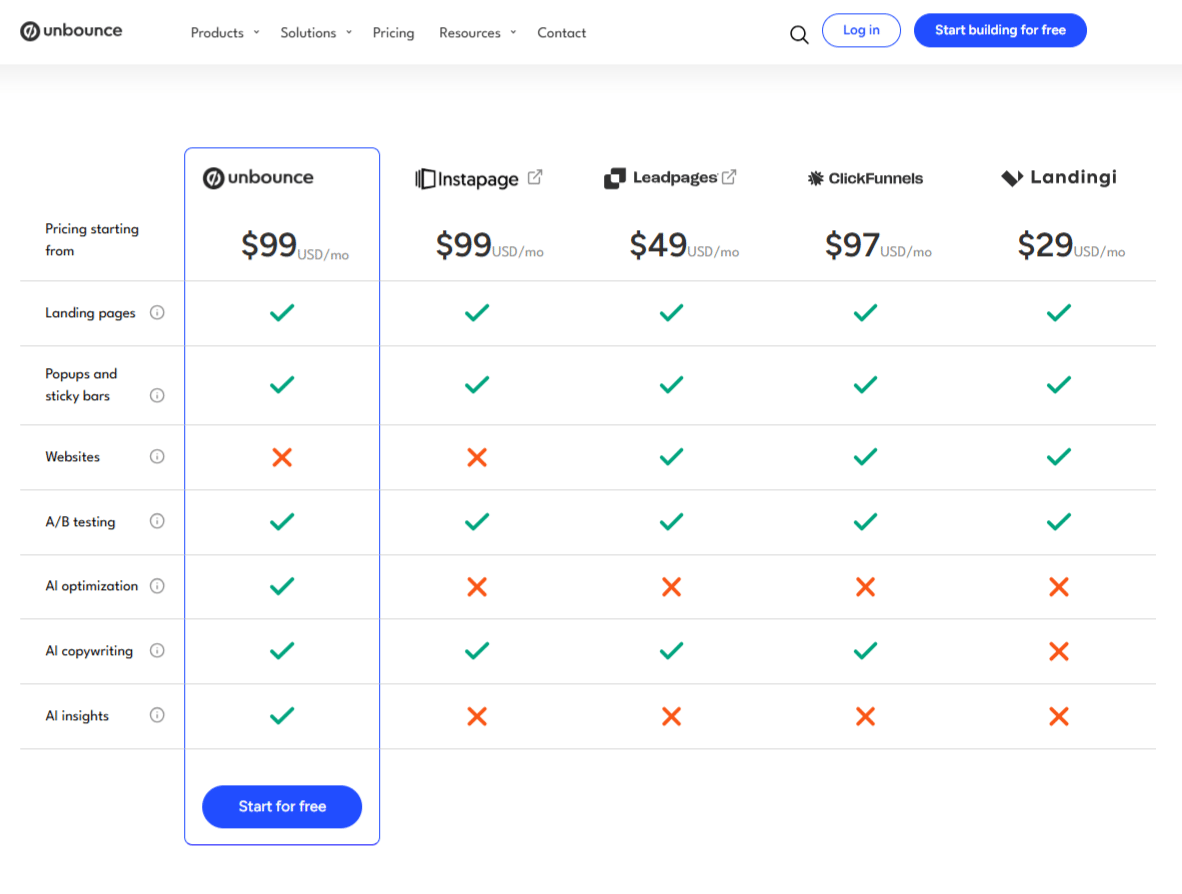
By putting all the different offerings on one page, Unbounce makes it easier for prospects to compare their options and make a confident decision.
What other factors influence consumer behavior?
While the four buying behaviors above are typical across many industries and products, other factors may influence people in your target segments.
To create marketing campaigns that prompt purchases, you must understand what impacts buying decisions about your specific brand or product.
Here are factors to consider when researching how your target market purchases products like yours.
Psychological factors
Psychological factors are the mental and emotional processes that influence purchasing behavior, including perception, motivation, learning, beliefs and attitudes.
Some examples of psychological factors include:
Cognitive biases (e.g., trusting those in authority, favoring existing beliefs and valuing immediate rewards over long-term alternatives)
Personality (e.g., openness to new experiences, conscientiousness, agreeableness and the tendency to experience positive emotions or emotional stability)
Marketing campaigns (e.g., conveying urgency with a limited-time offer)
Website design and quality (e.g., making it easy for customers to purchase in a few clicks)
Motivators (e.g., free trials and discounts)
Psychological motivators aren’t always clear-cut, according to Professor of Psychiatry and Behavioral Sciences Dr. Robert Malenka:
In terms of consumer behavior, customers usually buy insurance for high-value products. However, that doesn’t mean they like spending money on it.
Insurers can use this information to emphasize emotional benefits like peace of mind. They may also offer bundles with value-added services to enhance perceived value.
Want to Learn How to Influence Your Prospect’s Buying Decisions?
Personal factors
Personal factors are customer demographics that influence someone’s purchasing decisions.
Common personal factors include:
Preferences (e.g., splurging at the start of the month)
Lifestyle (e.g., prioritizing health and fitness)
Income (e.g., doing more discretionary spending in your current role than your previous one)
Impulse buying tendency (e.g., buying something without researching)
Marketers and salespeople often leverage emotional triggers that compel customers to act.
For example, the social media management tool SocialBee uses an email marketing offer to encourage FOMO (fear of missing out).

The subject line “next 3 days only!” sparks curiosity and urgency for email list subscribers.
Social factors
Social factors are the influences that society, family, friends and social media platforms have on purchasing decisions and behavior.
Even people we don’t know can make an impact. According to YouGov, one in four adults has purchased based on an influencer’s recommendation.
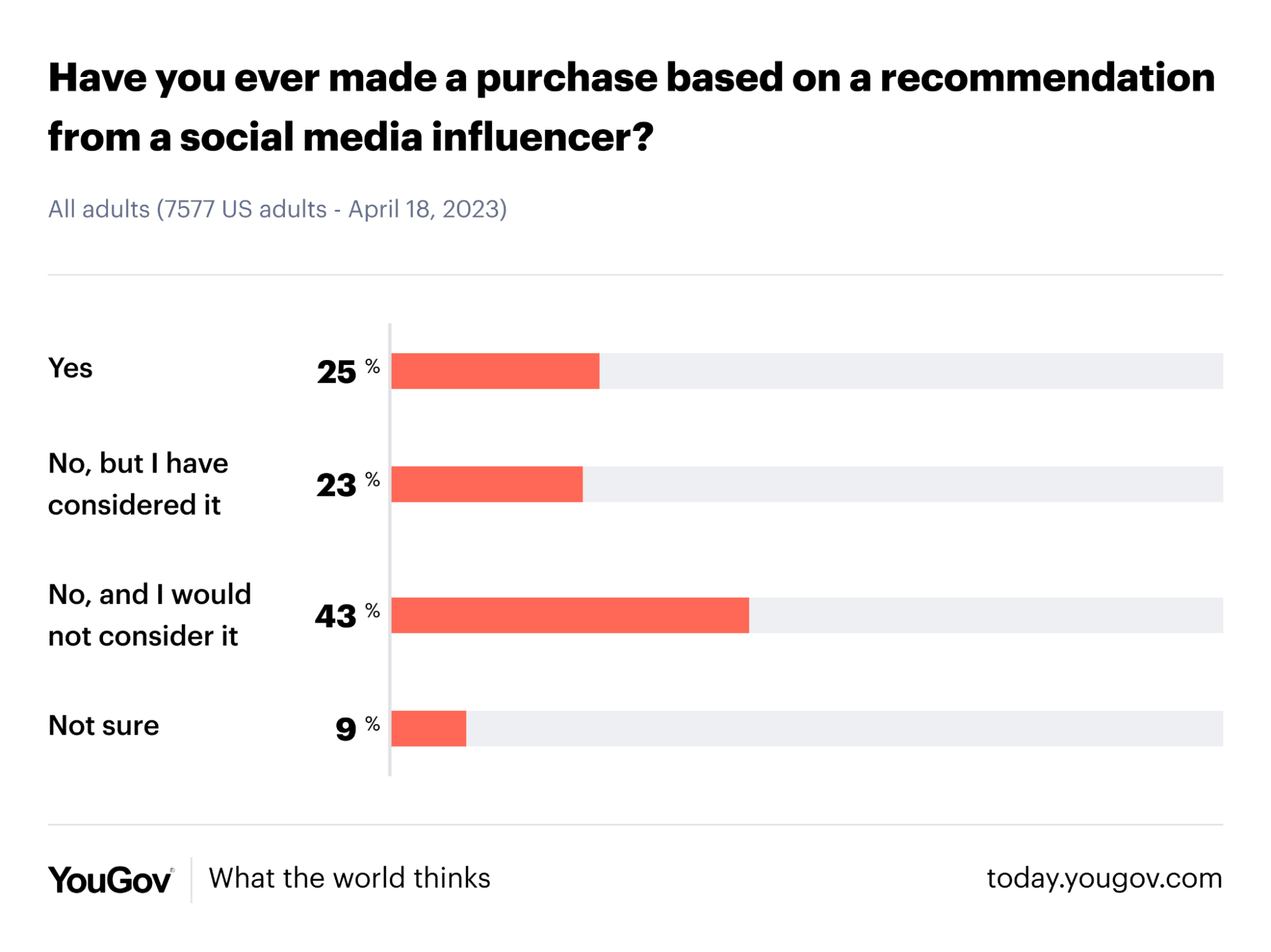
Other social influences that influence the purchasing process include:
Cultural norms (e.g., tipping in American restaurants)
Family and friends’ opinions (e.g., you may not sign up for a subscription you know a friend dislikes)
User-generated content (e.g., online reviews and ratings)
Social media (e.g., people you follow on Instagram that you may not know)
Consumer psychologist Kit Yarrow suggests that social media makes buying decisions feel more natural:
Situational factors
Situational factors are temporary conditions, like the physical environment or time constraints, that influence purchasing decisions.
Situational factors can include:
Time of day (e.g., you may spend more time browsing on a Sunday morning compared to a Thursday evening)
Location (e.g., you may buy more things on vacation than at home)
In-store music, sights and smells (e.g., a sweet-smelling store may prompt you to view the clothing more positively and purchase)
Customer’s mood (e.g., you may engage in “retail therapy” if you’re feeling sad)
An older study tested the impact of background music on people’s wine-shopping habits in a UK grocery store. When researchers played French music, people bought more French wine. The same was true for German music and wine.

When researchers asked if the music impacted people’s decision-making process, over 90% said no. Reactions like these show how situational factors influence spending subtly and subconsciously.
How to conduct a customer behavior analysis to meet your target market’s needs
To encourage customer loyalty, you must analyze your customer base’s behavior and make informed updates.
Here are four steps to conduct a worthwhile consumer behavior analysis and make changes that count.
1. Choose the question you want to answer to focus your data analysis
When building a customer behavior analysis strategy, you need a goal to track progress and give yourself the best chance of success.
Instead of analyzing and changing too many things at once, narrow your analysis to a single question that gives you clarity and direction.
Here are a few examples:
“Has our product become too expensive for our small business users?”
“Are there any points where customers abandon their carts or leave the site?”
“What external factors (e.g., trends or seasons) influence customer interest?”
“Is there anything we can do to reduce returns and increase customer satisfaction?”
“What tailored strategies can we develop for each customer segment to improve their experience?”
Focusing your analysis around one question ensures you’ll concentrate on gathering specific insights that address it directly, making the process more efficient and actionable.
Founder of Ravn Research, Clare McDermott, says one of the most common mistakes she sees is casting too wide a net:
Framing the analysis this way encourages a deeper understanding of the one thing you’re focused on, leading to more accurate and targeted strategies.
2. Conduct market research to gather valuable insights and customer feedback
Research your market and audience to understand what impacts existing customer needs, pain points, preferences and challenges.
Collect qualitative data (e.g., personal insights) and quantitative data (e.g., hard facts and metrics) to make more informed decisions.
Here’s an example of what your market research could look like (via online customer survey company SurveySparrow):

Let’s say you’re investigating a drop in subscriptions from small business users. Your analysis caused you to research whether your accounting software is too expensive for them.
You can use the following research methods to collect both types of data:
Surveys (e.g., website pop-ups or post-support chats)
Focus groups (e.g., in-person or through video conferencing)
Interviews (e.g., in-person or through email)
Experimentation (e.g., A/B testing)
Customer observation (e.g., social listening)
Wording your questions right keeps your results focused.
You could ask, “What do you think about our pricing?” However, you’ll get more specific insights by asking, “Have you ever considered switching tools due to our pricing? If so, which specific aspects concern you?”
How Pipedrive can help
Pipedrive’s CRM can help you quickly visualize and analyze survey results with custom pipelines.
For example, SurveySparrow integrates with Pipedrive, so when someone completes your pricing feedback survey, you can create a new deal in your pipeline with their responses mapped to custom fields.

The integration means you can track which prospects have pricing concerns and follow up accordingly, without manually transferring data between tools.
Companies often dedicate years to market research before launching their products. Continue to research as you grow to stay aligned with your target audience.
3. Analyze your data to identify patterns
Once you’ve collected customer data, analyze it to spot patterns, trends and anomalies.
See if some common themes emerge from your feedback that impact customer satisfaction. Examples include:
Users feel they’re paying too much for features they don’t use
Budgets for small businesses tightened due to the rising cost of living
Competitors offer better value for money
Pricing should be more transparent
Continuing with our previous example, say surveys reveal that smaller firms love your accounting software’s basic features. However, they think your pricing structure suits larger companies.
Users point out cheaper alternatives but prefer your user experience. All this is crucial information.
How Pipedrive can help
Pipedrive can help you organize and analyze feedback at scale with custom fields. Add a custom field to each deal for “Primary objection”, with options for objections like “Pricing too high” or “Missing advanced features”.
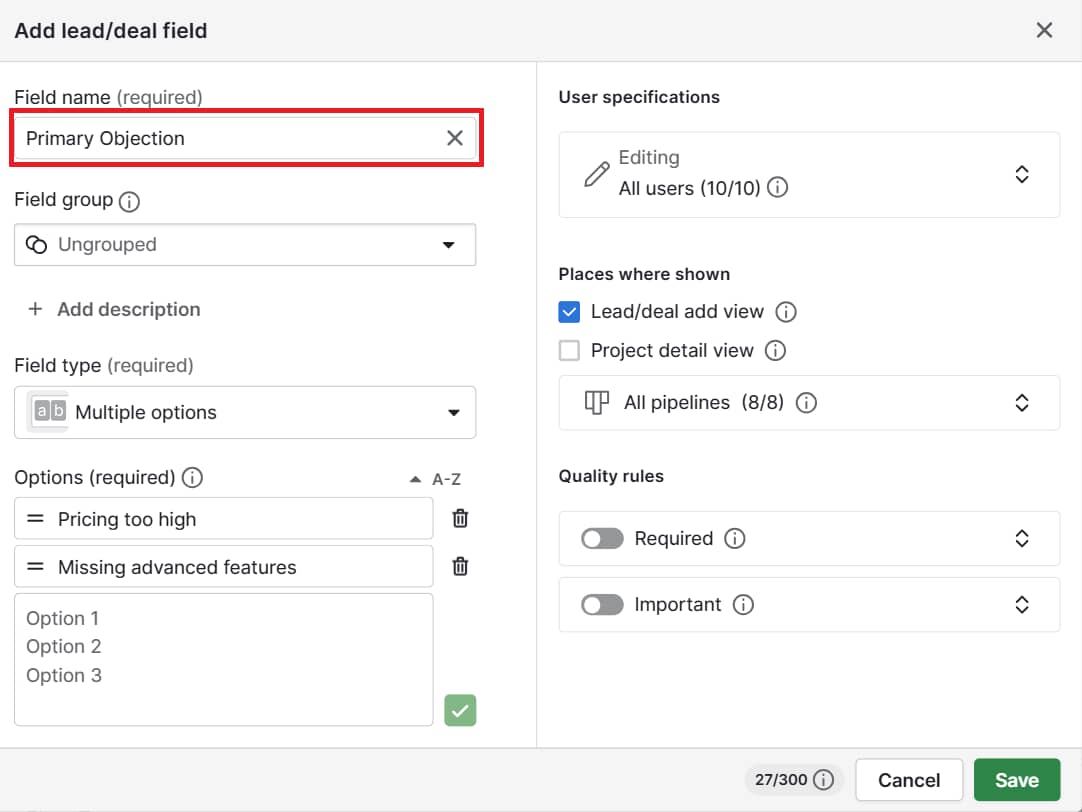
Filter your pipeline by your custom fields to see patterns across segments, like which industries mention pricing most or which company sizes value your features. Hard data helps you make more confident decisions when you reassess your strategies.
Pipedrive in action: SaaS company Kovai.co tracks customer behavior through Pipedrive’s API. The integration captures trial user activities and key events from its app directly in Pipedrive.
Salespeople see the entire customer journey on the deal and contact pages. Understanding customer engagement has helped Kovai.co streamline its sales processes and grow its sales team by 50%.
4. Draw conclusions and optimize your customer journey
Once you’ve analyzed the data, use your insights to recommend new strategies that improve your customer experience.
Write down answers to your initial question (conclusions) and the tactics you’ll implement to achieve them (an action plan).
For example, your conclusions might be:
Our product has become too expensive for many small business owners
The current economic climate has put a strain on small business budgets
Many small business users aren’t making the most of our range of features
Our user experience and rewards program are what draw users to us over competitors initially
With these answers, create a plan to adjust your pricing and customer journey touchpoints. Take these conclusions and turn them into a statement like this:
Next, determine tactics you’ll use at different customer journey stages to achieve your new goal.
Tactics may include:
Highlighting the new plan in your digital marketing efforts
Creating new content to compare the new plan to your competitors’ offers
Ensuring a clear, straightforward pricing page that explains plan benefits, with FAQs to address common concerns
Providing step-by-step onboarding that focuses on fewer, more relevant features
Sharing success stories of small businesses that benefited from the new plan
Once the changes are live, track metrics that measure their success. For example, you may choose conversion rate, customer retention rate, churn rate or customer lifetime value (CLV).
How Pipedrive can help
Pipedrive has a conversion rate report baked in, so you can easily see how many deals you win at a glance.

Remember to benchmark any figures before you make changes so you know what you’re comparing future metrics to.
Final thoughts
Understanding consumer behavior isn’t an exact science. However, studying trends and patterns in your target audience can help you make changes that benefit your target segments.
Over time, you can hone your process to get the most accurate information. Keep up with customer needs and wants by regularly analyzing their responses to changing internal and external stimuli.
Use a customer management tool like Pipedrive to streamline data collection while keeping all your insights and reports in one place. Try it free for 14 days.


